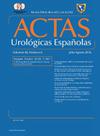Phyllanthus niruri en el manejo de las litiasis urinarias: revisión sistemática de la literatura
IF 1.2
4区 医学
Q3 UROLOGY & NEPHROLOGY
引用次数: 0
Abstract
Introduction and objectives
Nephrolithiasis is one of the most prevalent urological pathologies worldwide, with an increasing incidence and multifactorial etiology, particularly influenced by diet. Surgical interventions or extracorporeal shock wave lithotripsy (ESWL) are the cornerstone treatments. However, as emphasized by the EAU and AUA guidelines, post-surgical medical management is recommended to reduce recurrence risk. Phyllanthus niruri (PN), widely used in traditional medicine, has been extensively researched, yielding mixed results and presenting an opportunity to explore its role further. This review aims to evaluate PN's potential in enhancing treatment efficacy and reducing stone recurrence.
Materials and Methods
A systematic literature review was conducted, encompassing articles published from January 1994 to September 2022 in English and Spanish. The review included studies on humans and rats accessible through the authors’ institutional affiliations. Titles and abstracts were screened, and relevant studies were selected for in-depth analysis.
Results
Out of the 16 selected studies, various mechanisms of action for PN were identified, such as promoting glycosaminoglycan (GAG) aggregation, inhibiting nucleation processes, and altering stone density to favor a stone-free state (SFR). Evidence consistently supports PN's long-term safety, confirmed by serial measurements of serum electrolytes and liver function. Novel applications, such as PN as an adjuvant to ESWL, show benefits for lower renal pole stones.
Conclusions
Growing evidence suggests that PN, when used alongside traditional interventions, is safe, without significant adverse effects, and may improve SFR outcomes after ESWL.
Phyllanthus niruri在尿路碎石病管理中的作用:系统文献综述
导读和目的肾结石是世界范围内最常见的泌尿系统疾病之一,其发病率不断上升,病因多因素,特别是受饮食的影响。外科手术或体外冲击波碎石(ESWL)是治疗的基础。然而,正如EAU和AUA指南所强调的,建议术后医疗管理以减少复发风险。在传统医学中广泛使用的Phyllanthus niruri (PN)已经得到了广泛的研究,产生了不同的结果,并提供了进一步探索其作用的机会。本综述旨在评价PN在提高治疗效果和减少结石复发方面的潜力。材料和方法对1994年1月至2022年9月以英语和西班牙语发表的文章进行了系统的文献综述。该综述包括通过作者的机构关系可获得的对人类和大鼠的研究。筛选题目和摘要,选择相关研究进行深入分析。结果在16项选定的研究中,确定了PN的各种作用机制,如促进糖胺聚糖(GAG)聚集,抑制成核过程,改变结石密度以促进结石游离状态(SFR)。经血清电解质和肝功能的一系列测量证实,证据一致支持PN的长期安全性。新的应用,如PN作为ESWL的辅助,显示出对肾下极结石的益处。结论:越来越多的证据表明,当与传统干预措施一起使用时,PN是安全的,没有明显的不良反应,并且可能改善ESWL后的SFR结果。
本文章由计算机程序翻译,如有差异,请以英文原文为准。
求助全文
约1分钟内获得全文
求助全文
来源期刊

Actas urologicas espanolas
UROLOGY & NEPHROLOGY-
CiteScore
1.90
自引率
0.00%
发文量
98
审稿时长
46 days
期刊介绍:
Actas Urológicas Españolas is an international journal dedicated to urological diseases and renal transplant. It has been the official publication of the Spanish Urology Association since 1974 and of the American Urology Confederation since 2008. Its articles cover all aspects related to urology.
Actas Urológicas Españolas, governed by the peer review system (double blinded), is published online in Spanish and English. Consequently, manuscripts may be sent in Spanish or English and bidirectional free cost translation will be provided.
 求助内容:
求助内容: 应助结果提醒方式:
应助结果提醒方式:


